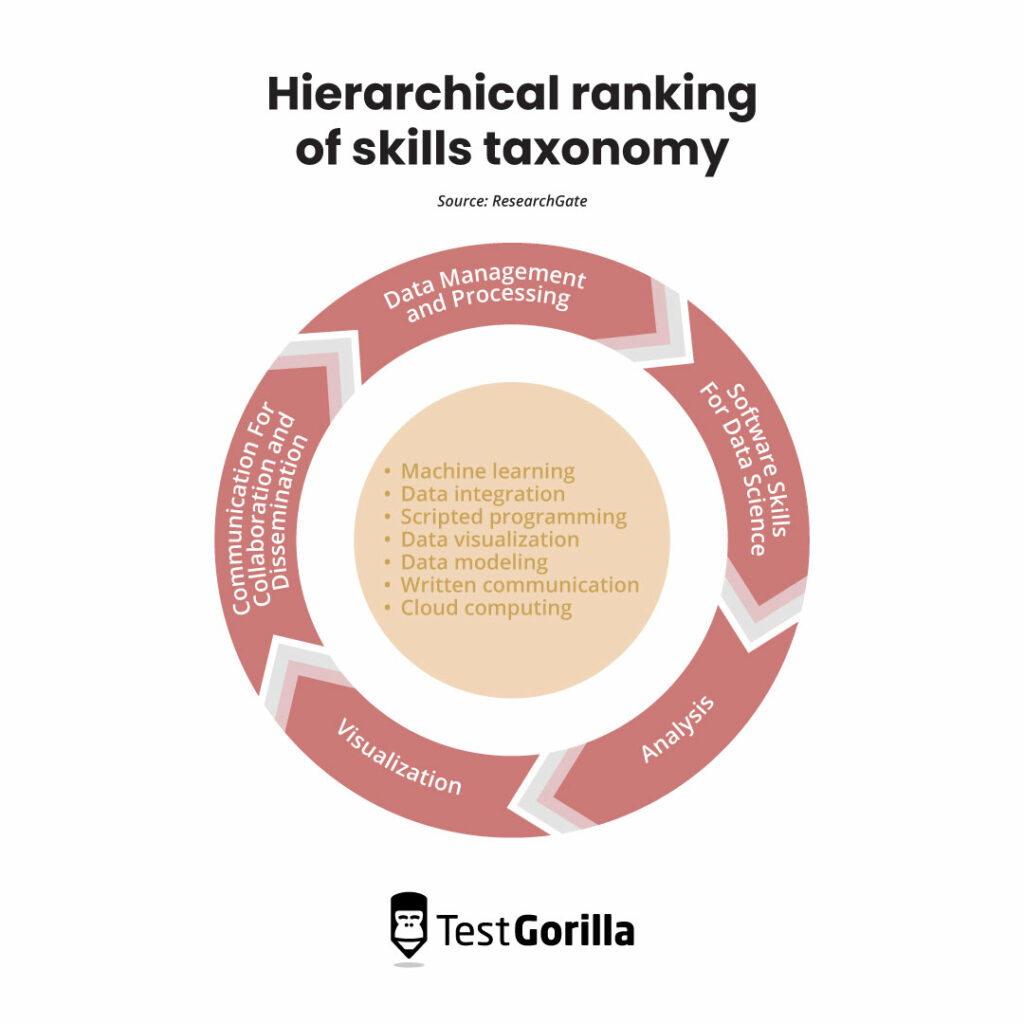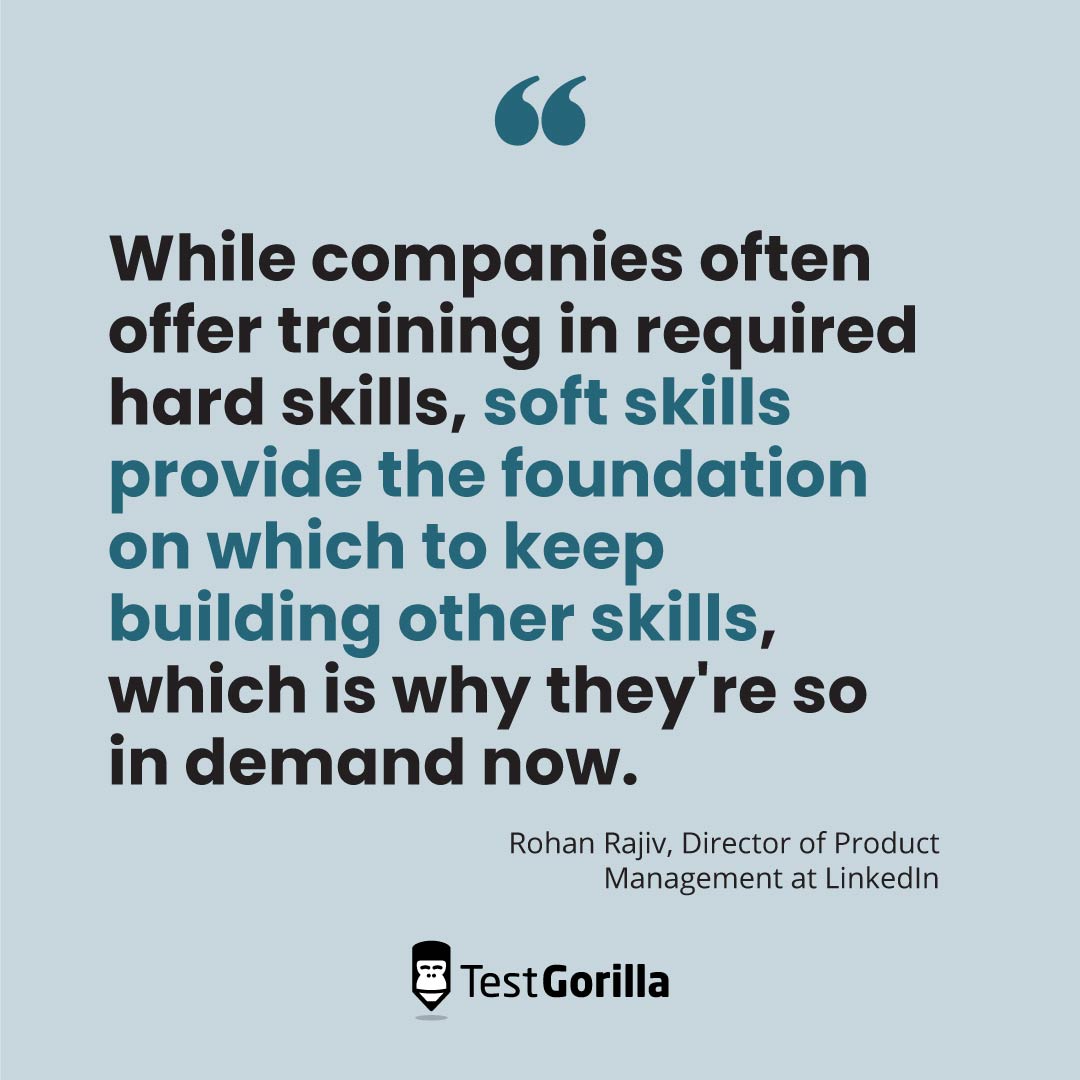Economists call it the skills gap, the deficit between the competencies employers require and those employees possess.
It’s a problem that affects most recruiters and hiring managers. From the tech sector to financial services, hospitality, and retail – companies in every industry are struggling to find suitable candidates to fill critical positions.
But is a lack of skilled workers really to blame for this talent shortage?
Not so, according to a study presented at the American Economics Association’s annual conference. In the paper, authors Alicia Sasser Modestino, Daniel Shoag, and Joshua Balance show that employers increase skill requirements for jobs during periods of high unemployment, even when additional qualifications aren’t necessary for the position.
Conversely, when the companies relax their demands, employment rates rise, and the market tilts in favor of candidates.
In today’s historically tight, candidate-driven labor market, building a hiring process around strict screening measures limits your talent pool to the few in-demand candidates who can clear the bar.
However, there is a sea of motivated, high-potential applicants waiting in the wings that you’re overlooking. Candidates who might not have the specific experience or qualifications you asked for but who do possess a range of adjacent skills that could easily be applied to a new role – if you just give them a chance to show it.
Table of contents
How adjacent skills reflect the changing world of work
We live in disruptive times. In any given quarter, companies could be forced to deal with the fallout from geopolitical conflicts, supply chain issues, or suddenly emerging competitors. Organizations must ensure their workforces are as agile as possible to tackle these challenges.
That means moving away from the limited job-based work that dominated industries for the best part of the 20th century towards a much more fluid model in which people are encouraged to contribute value in various ways according to their competencies.
In this project-based approach, an employee is given a set of responsibilities and some desired outcomes. These targets could be linked to activities across several functions, some directly related to the employee’s position and others not.
For example, a data analyst might be asked to lend their expertise to a digital content audit. As part of this project, they would need to learn how to use tools such as Google Analytics and develop an understanding of the metrics that matter to the marketing team.
The offshoot is that a specialist picks up adjacent skills and expands the scope of their role. They also improve their employability, as they can bring a marketer’s perspective to future projects and, if necessary, use this newfound knowledge to create more effective solutions.
Driving career transitions
According to Anil Singhal, the chief executive of software company Netscout, employees who only focus on developing their primary skills will eventually reach a plateau in their productivity and ability to innovate. But constantly adding “secondary skills” enables them to reinvent their careers continuously.
Acclaimed director Ava Duvernay is an excellent example of this philosophy in action.
Duvernay earned her undergraduate degree in English literature and African-American studies at the University of California and started her career in journalism before transitioning into a publicist role for various production studios. Eventually, she started her own PR firm and played a hand in promoting blockbuster titles like Shrek 2, The Terminal, and Collateral.
At the same time, she took advantage of her proximity to Hollywood and began visiting film sets to hone her understanding of the craft. At the age of 32, she started to direct short films in her spare time. In 2011, she managed to parlay her hard-earned skills into the launch of her first full-length narrative film, “It Follows.” The movie was a critical success and won the best direction award at Sundance Film Festival.
While this type of success might seem like an outlier, most employees in the modern workforce are developing their adjacent skills in similar ways.
The question is, how do you spot a candidate who’s in the right place for a career transition?
How to hire for adjacent skills (in five steps)
Step 1: Develop a skills taxonomy
Before identifying which candidates are suitable for a role, you must understand all the skills required for the position.
A great way to view this information is through a skills taxonomy, which groups the knowledge, technical capabilities, and soft skills related to a particular role in an easily accessible format. Once all the ingredients for a position are identified, they can be ranked hierarchically according to their level of importance.
For example, priority skills for a data scientist might include machine learning, data integration, scripted programming languages like Python, and data modeling. Knowledge of cloud computing principles might be helpful to the role but not essential and therefore placed lower down in the skills hierarchy.
After completing this process for a few positions within a function, you will see where skills overlap between roles and recognize where adjacent skills could be developed.
Step 2: Determine whether skills are “durable”or “perishable”
An essential aspect of building out your taxonomy is recognizing which skills are foundational and which may have a shorter shelf life.
This exercise will help you zero in on the skills that enable a candidate to experience continued success in a role. Instead of someone who might be able to hit the ground running but will eventually run into a dead-end as they don’t have the necessary attitude and strategic mindset to level up as time goes on.
CLO magazine put forward a basic structure for bucketing skills based on three categories:
Perishable skills: These are technical skills tied to a specific vendor, platform, or programming language (e.g.., skills in Oracle DBMS). In some cases, they may even be limited to a particular application or process only used within the organization. These abilities are subject to obsolescence as technology advances and the company evolves. According to IBM, these skills have a half-life of just 2.5 years.
Semi-durable skills: These knowledge frameworks are the basis for different tools, technology, and processes. For a database administrator, these knowledge frameworks would encompass principles of database architecture, database management, and data analysis. These skills could remain relevant for anywhere up to 7.5 years.
Durable skills: These fundamental mindsets enable employees to develop and execute their semi-durable and perishable skills. However, they must be tangible, teachable, and verifiable to be assessed. For example, a deep understanding of the agile methodology and the ability to work within these frameworks would be essential for a product manager in a modern software company. These are truly transferable skills that will provide continuing value to your company for years to come.
Step 3: Adjust your job descriptions
Once you’ve identified the non-negotiable skills for a role, you can adjust your hiring processes to allow for a wider talent pool.
The best place to start is how you write job descriptions.
Traditionally, hiring managers are asked to include as much detail as possible in their job descriptions to ensure only the “right” candidates apply. But this approach will exclude many excellent prospects with strong adjacent skills.
Indeed, studies from Hewlett Packard reveal that women are far less likely to apply for roles in which they don’t match 100% of the requirements. Our data backs up these figures, showing that 46.1% of women switched jobs across 2022 compared to 56.2% of men.
Instead of listing a long list of qualifications and placing expectations on years of experience required for the job, focus on communicating the must-have skills for the job.
Be careful with language here, too. Adding phrases like “preferred but not required” or “nice-to-have” in the job description is tempting, but these terms will cause many applicants to exit the recruitment funnel.
Wherever possible, try to translate your hiring criteria into actual responsibilities and focus on durable skills. So, if you’re advertising for a project management position, ask for candidates who can build and oversee agile working processes rather than simply adding a requirement for 5+ years of experience in Jira.
When drafting job descriptions, you must decide which skills can be trained and which ones the employee must possess from the start.
Suppose you’re looking for a contract negotiator in the healthcare industry. Is it essential that the applicant has prior experience in the field, or would someone with a similar background in the manufacturing industry be able to provide the same output? Could an outside perspective bring ideas to the table?
Step 4: Validate skills
The next step is to test applicants to see whether their primary and adjacent skills match the requirements for the role.
Using a multi-measure assessment is vital to get a complete picture of the candidate’s talent. This means testing applicants across several dimensions, including their technical skills, cognitive ability, and personality, to see where they can contribute value and where they might fall short.
Ensure you align your assessment strategy with your skills taxonomy work to ensure you’re checking for the right competencies.
Remember, when it comes to identifying adjacent skills – attitude, motivation, and mindset will be far more durable than specific hard skills, which have a far shorter shelf life.
Our report confirms this fact. 73.5% of hiring managers we surveyed said soft skills were more important for candidates now than five years ago.
Meanwhile, data from Mckinsey shows that soft skills like leadership and management became a priority for more than half of all hiring managers by 2020.
Culture is another critical factor to consider during the assessment phase. Remember, one of the biggest benefits of hiring for adjacent skills is finding candidates who can bring a fresh perspective to the role, so hiring someone who simply fits in isn’t enough.
Culture add is a new term that has been popping up in recruitment circles in recent years. Testing for this quality means acknowledging that your current company culture isn’t perfect and that it could benefit from individuals that can bring diverse opinions and unanticipated skills to the role.
Step 5: Encourage internal mobility
The best way to find candidates with strong adjacent skills might be to look internally toward talent that might not otherwise have a clear path to advancement within the organization.
Once you’ve completed your skills taxonomy and identified where overlaps between different roles exist, you can identify employees who could move into new roles and fill existing skills gaps in the process.
Talk to these employees about their current roles and possible avenues for career development that align with their interests. Once you’ve explained the pathways for advancement that are open to them, set up learning and development goals that reflect these conversations.
From there, monitor how selected candidates progress and re-evaluate their competencies at set intervals to determine whether they are ready to transition into a new role.
Update your talent acquisition strategy by hiring for adjacent skills.
The disruptions that marked the past five years are only the beginning. Over the next decade, AI and other technologies promise to usher in a new world of work. Any business that wants to remain competitive through this upheaval must take steps to futureproof its talent acquisition strategy.
By focusing on hiring for adjacent skills, you can leverage the true potential of your applicant pool and build a workforce that will grow and continue to innovate for years to come.
Ready to start hiring for adjacent skills? Check out how our talent assessment platform can help you evaluate the full range of your candidate’s capabilities.
Related posts
Hire the best candidates with TestGorilla
Create pre-employment assessments in minutes to screen candidates, save time, and hire the best talent.
Latest posts
The best advice in pre-employment testing, in your inbox.
No spam. Unsubscribe at any time.

Hire the best. No bias. No stress.
Our screening tests identify the best candidates and make your hiring decisions faster, easier, and bias-free.
Free resources
This checklist covers key features you should look for when choosing a skills testing platform
This resource will help you develop an onboarding checklist for new hires.
How to assess your candidates' attention to detail.
Learn how to get human resources certified through HRCI or SHRM.
Learn how you can improve the level of talent at your company.
Learn how CapitalT reduced hiring bias with online skills assessments.
Learn how to make the resume process more efficient and more effective.
Improve your hiring strategy with these 7 critical recruitment metrics.
Learn how Sukhi decreased time spent reviewing resumes by 83%!
Hire more efficiently with these hacks that 99% of recruiters aren't using.
Make a business case for diversity and inclusion initiatives with this data.























